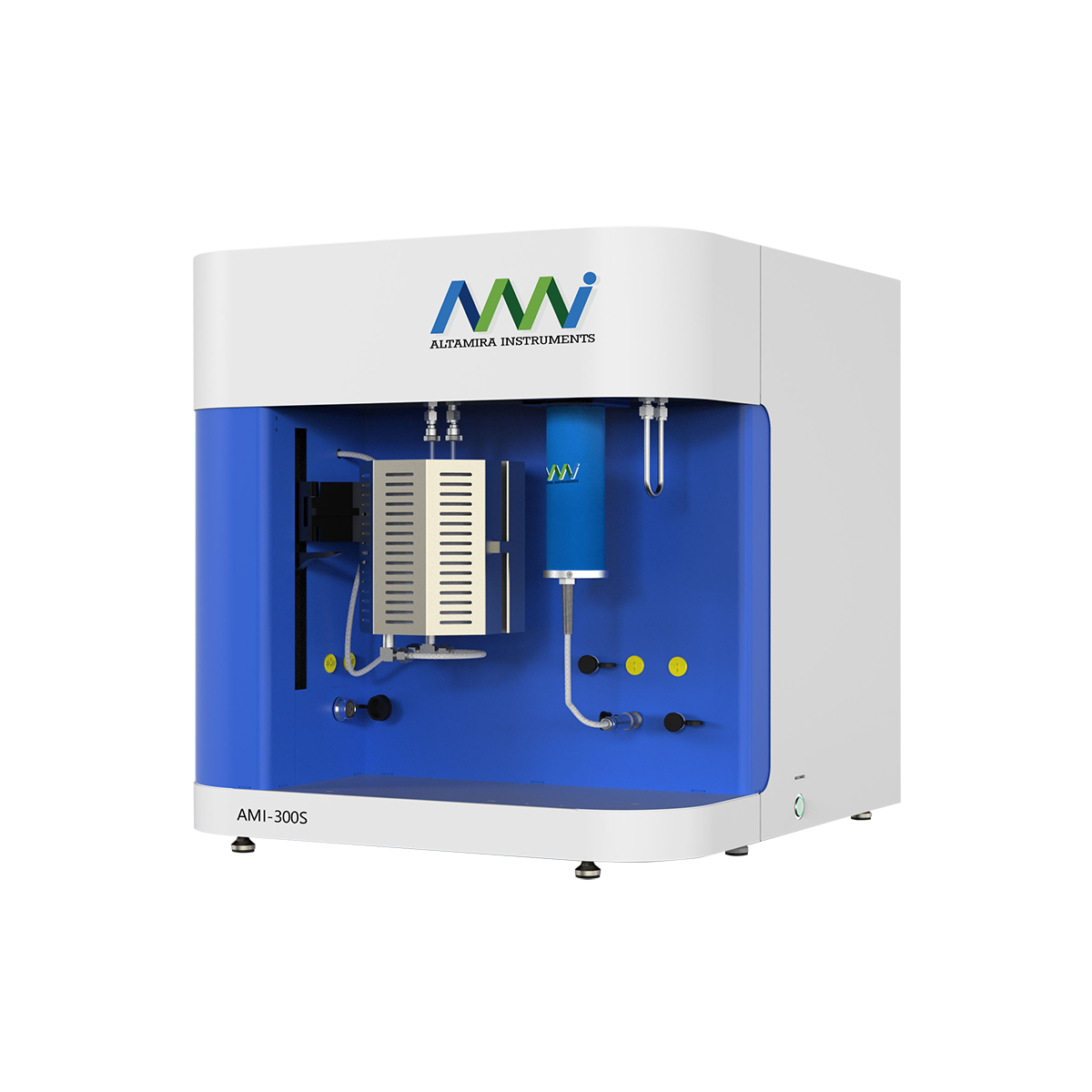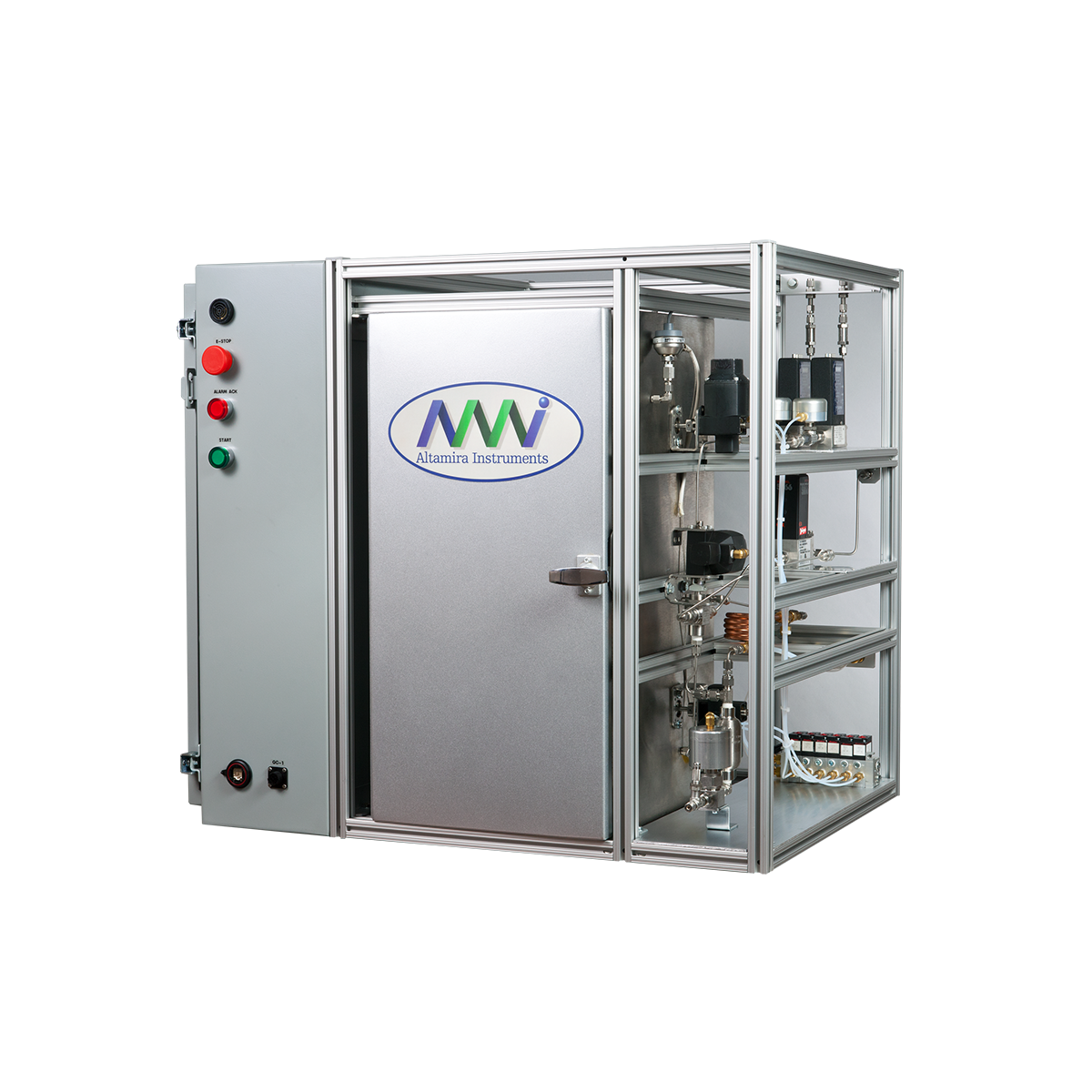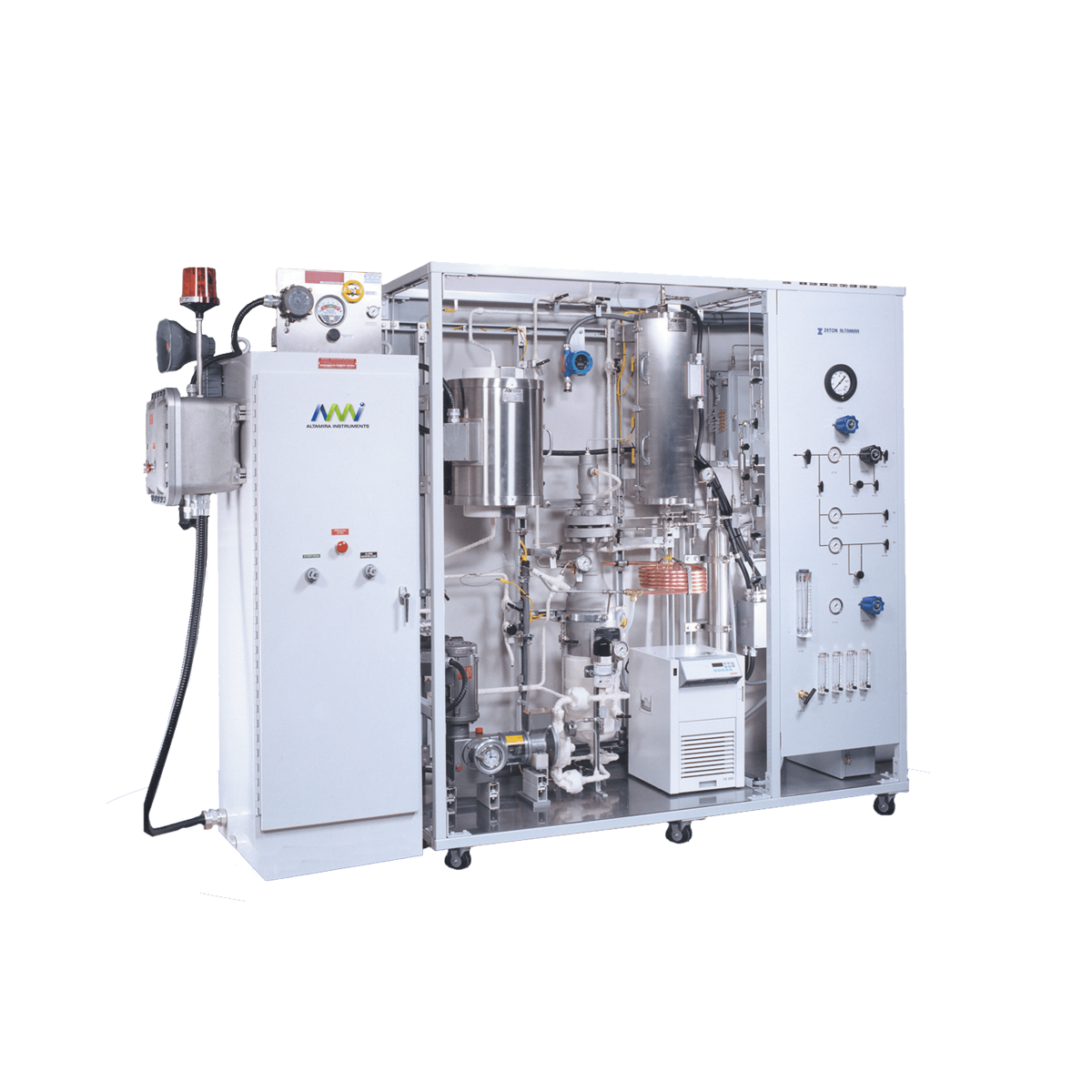Experimental
In this TPO method, CO2 an FID insensitive gas, is converted to CH4, an FID sensitive gas, in the presence of a carrier gas containing oxygen. For these experiments, an AMI-1 Catalyst Characterization System with a methanator and FID was used. Figure 1 shows the flow diagram for this system. The methanator was a small reactor filled with ruthenium catalyst that was placed after the sample Utube. When hydrogen passed through the methanator, the Ru catalyst hydrogenated CO2 to CH4 quantitatively. The rate of CH4 generation was continuously monitored by the FID. A GC column was not required because an FID is insensitive to oxygen and water when present in the gas stream.
A flow diagram for the automated TPO with the new Detection System.
For these experiments, approximately 20mg of coked catalyst were loaded in the sample cell. A helium carrier containing a low concentration of oxygen flowed over the sample at a flow rate of 20-80 cc/min. The temperature was increased linearly from room temperature until the oxidation of all carbon deposits was complete. The methanator contained approximately 500 mg of 40 wt% Ru/zeolite 13X. A pure hydrogen stream was injected into methanator at 22 cc/mm. At that point, CO2 was transformed to CH4 and the oxygen in the carrier gas to water. The combined stream then flowed directly to the FID. The FID continuously monitored the methane generation rate which, for this method, was equivalent to the coke oxidation rate.
Influence of Oxygen Concentration, Flow Rate, and Methanator Temperature
TPO experiments require excess oxygen, so it was necessary to study the influence of oxygen on the hydrogenation of CO2 to CH4 and to establish the optimum conditions for running the TPO experiment. The effects of flow rate and methanator temperature on the hydrogenation efficiency of the ruthenium catalyst were also studied, as well as the effect of various pretreatments on the ruthenium hydrogenation activity.
To study the influence of oxygen concentration, pulses of 1%, 2%, and 4.26% CO2 in helium were sent to the methanator in a pure helium carrier stream. Pulses of CO2 were also sent in a helium carrier containing 0.5%, 1%, and 3% oxygen. As shown in Table 1, the CO2 pulses were completely converted to CH4 except when the oxygen concentration was increased to 3%. One possible reason for this behavior is that water produced in the methanator, due to oxygen in the carrier gas, decreases the equilibrium conversion of CO2 to CH4.
CO2 + 4H2 CH4 + H2O
The higher the oxygen concentration, the more water that is formed, thus the greater the effect on the equilibrium conversion. The results in Table 2 show that TPO experiments should be carried out at 3% or less oxygen in the carrier stream and at a methanator temperature less than 430°C to avoid equilibrium limitations. Therefore, the incomplete conversion of CO2 to CH4 in Table 1 is not due to equilibrium limitations.
Another possible reason for the incomplete conversion of CO2 to CH4 is that water inhibits the methanation rate of the ruthenium catalyst. Experiments were performed in which three parameters were varied: the oxygen concentration in the carrier gas, the methanator temperature, and the carrier gas flow rate. As shown in Table 3, it necessary to decrease the flow rate when higher concentration of oxygen were used. Additional experiments were performed in which the carrier gas was saturated with water at room temperature (2.6% water in helium, which is equivalent to the amount of water being produced in 1.3% oxygen in helium). These results agree with data obtained from earlier experiments which suggested that oxygen concentration of less than 2% should be used. If higher oxygen concentrations were desired, an oxygen trap could be installed in front of the methanator. These traps remove oxygen without altering the CO2 concentration in the gas existing in the sample U-tube
Temperature-programmed methanation experiments were used to determine the stability of the ruthenium catalyst and the optimum methanator temperature for the conversion of CO2 to CH4. Again looking at Table 3, it can be seen that CO2 conversion improved with increasing temperature and decreasing flow rate. This indicates that the limitations of CO2 conversion in the presence of oxygen are a kinetic phenomenon. It was also found that the activity of the catalyst increased with increasing temperature. It was noted, however, that temperature chosen should be as low as possible to avoid sintering the ruthenium particles.
With regard to the carrier gas flow rate, experimental results indicated that the FID sensitivity increased linearly with increasing carrier flow rates up to 60 cc/min. The FID sensitivity leveled off at flow rates above this point.
One last point that is important to note is that the ruthenium catalyst in the methanator became deactivated through sulfur poisoning from sulfur oxide which generated in the burning of the coked catalyst. Installing a sulfur oxide trap in front of the methanator proved to be the most effective means of removing sulfur contamination without removing CO2.
Conclusions
These experiments show that TPO utilizing a methanator and FID is an effective means of monitoring the carbon oxidation rate of coked catalysts. By determining the optimal experimental parameters, the complete conversion of CO2 or CO to CH4 is possible in the presence of a carrier gas containing oxygen. This technique is useful for detecting less than 0.1% carbon and for differentiating subtle changes in the distribution of coke on the catalyst surface.
This Altamira Note summarizes a presentation given by Dr. S.C. Fung at Altamira's 1991 U.S. User's Meeting. For further information about this TPO method, refer to S.C. Fung, and C.A. Querini, "A Highly Sensitive Detection Method for Temperature-Programmed Oxidation of Coke Deposits: Methanation of CO2 in the Presence of 02",J. of Catalysis, 138, p240 (1992).




